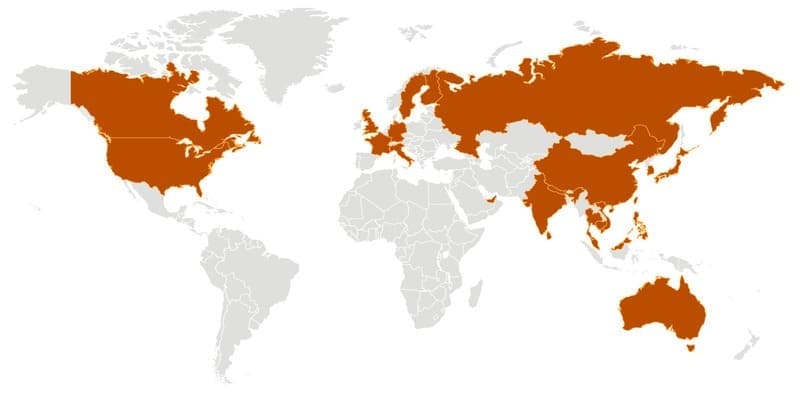The new CoronaVirus: What We Do? and Don’t? know! Because the situation around the 2019-nCoV coronavirus is changing rapidly, the most recently updated information will be available from these sites:
- Summary of outbreak and response from the CDC
- Information on symptoms, prevention, and treatment (CDC)
- US situation summary (CDC)
- International summary (World Health Organization)
The new CoronaVirus: What We Do? and Don’t? know!
A rapidly evolving health story broke in late December when a novel illness originating in Wuhan, China made the news. Reports of the number of infected people swiftly rose, and isolated cases of this new coronavirus — dubbed 2019-nCoV by scientists — have appeared in several countries due to international travel. At this writing, almost 1,300 confirmed cases and over 40 deaths have occurred in China, according to an article in the New York Times.

Fortunately, public health officials in many countries, including the US, have put measures in place to help prevent further spread of the virus. These measures include health screenings at major airports in the US for people traveling from Wuhan. In China, travel restrictions are in effect.
With information changing so quickly and every news report about the virus seeming to raise the stakes, you may be wondering how worried you should be. Here’s a primer on what we do — and don’t — know about this virus and what it may mean for you. While there is much we don’t yet understand about the virus, public health officials, medical experts, and scientists are working in collaboration to learn more.
Novel Coronavirus (2019-nCoV)
On 31 December 2019, WHO was informed of a cluster of cases of pneumonia of unknown cause detected in Wuhan City, Hubei Province of China.
In addition to providing care to patients and isolating new cases as they are identified, Chinese public health officials have reported that they remain focused on continued contact tracing, conducting environmental assessments at the wholesale market, and investigations to identify the pathogen causing the outbreak.
WHO is closely monitoring this event and is in active communication with counterparts in China. In line with standard protocols for any public health event, an incident management system has been activated across the three levels of WHO (country office, regional office and headquarters) and the Organization is prepared to mount a broader response, if needed.
What is a Coronavirus?
Coronaviruses are an extremely common cause of colds and other upper respiratory infections.

These viruses are zoonoses, which means they can infect certain animals and spread from one animal to another. A coronavirus can potentially spread to humans, particularly if certain mutations in the virus occur.
Chinese health authorities reported a group of cases of viral pneumonia to the World Health Organization (WHO) in late December 2019. Many of the ill people had contact with a seafood and animal market in Wuhan, a large city in eastern China, though it has since become clear that the virus can spread from person to person.

What are the Symptoms of this Coronavirus?
The symptoms can include a cough, possibly with a fever and shortness of breath. There are some early reports of non-respiratory symptoms, such as nausea, vomiting, or diarrhea. Many people recover within a few days. However, some people — especially the very young, elderly, or people who have a weakened immune system — may develop a more serious infection, such as bronchitis or pneumonia.
How is it Treated?
Scientists are working hard to understand the virus, and Chinese health authorities have posted its full genome in international databases. Currently, there are no approved antivirals for this particular coronavirus, so treatment is supportive. For the sickest patients with this illness, specialized, aggressive care in an intensive care unit (ICU) can be lifesaving.
Should you worry about catching this virus?

Unless you’ve been in close contact with someone who has the Coronavirus — which right now, typically means a traveler from Wuhan, China who actually has the virus — you’re likely to be safe. In the US, for example, only two cases of the virus have been confirmed so far, although this is likely to change.
While we don’t yet understand the particulars of how this virus spreads, Coronaviruses usually spread through droplets containing large particles that typically can only be suspended in the air for three to six feet before dissipating. By contrast, measles or varicella (chickenpox) spread through smaller droplets over much greater distances. Some coronaviruses also have been found in the stool of certain individuals.

So it’s likely that coughs or sneezes from an infected person may spread the virus. It’s too early to say whether another route of transmission, fecal-oral contact, might also spread this particular virus.
What is MERS?
Middle East Respiratory Syndrome (MERS) is a respiratory illness. It is caused by a virus called Middle East Respiratory Syndrome Coronavirus, or MERS-CoV. This virus was first
reported in 2012 in Saudi Arabia. It is different from any other coronaviruses that have been found in people before
Basic infectious disease principles are key to curbing the spread of this virus. Wash your hands regularly. Cover coughs and sneezes with your inner elbow. Avoid touching your eyes, nose, or mouth with your hands. Stay home from work or school if you have a fever. Stay away from people who have signs of a respiratory tract infection, such as runny nose, coughing, and sneezing.
In the US, the average person is at extremely low risk of catching this novel coronavirus. This winter, in fact, we are much more likely to get influenza B — the flu
Than any other virus:
- one in 10 people have influenza
- each flu season.
- It’s still not too late to get a flu shot, an easy step toward avoiding the flu. If you do get the flu despite having gotten the vaccine, studies show that severe illness, hospitalization, ICU admission, and death are less likely to occur.
The Bottom Line
Given the current spread of this virus and the pace and complexity of international travel, the number of cases and deaths will likely to continue to climb. We should not panic, even though we are dealing with a serious and novel pathogen. Public health teams are assembling. Lessons learned from other serious viruses, such as SARS and MERS, will help.
What is SARS?
Severe acute respiratory syndrome (SARS) is a viral respiratory illness caused by a coronavirus, called SARS-associated coronavirus (SARS-CoV). SARS was first reported in Asia in February 2003. Over the next few months, the illness spread to more than two dozen countries in North America, South America, Europe, and Asia before the SARS global outbreak of 2003 was contained. This fact sheet gives basic information about the illness and what CDC did to control SARS in the United States.
As more information becomes available, public health organizations like the Centers for Disease Control (CDC) in the US and the World Health Organization (WHO) will be sharing key information and strategies worldwide.
More Informations on Internet